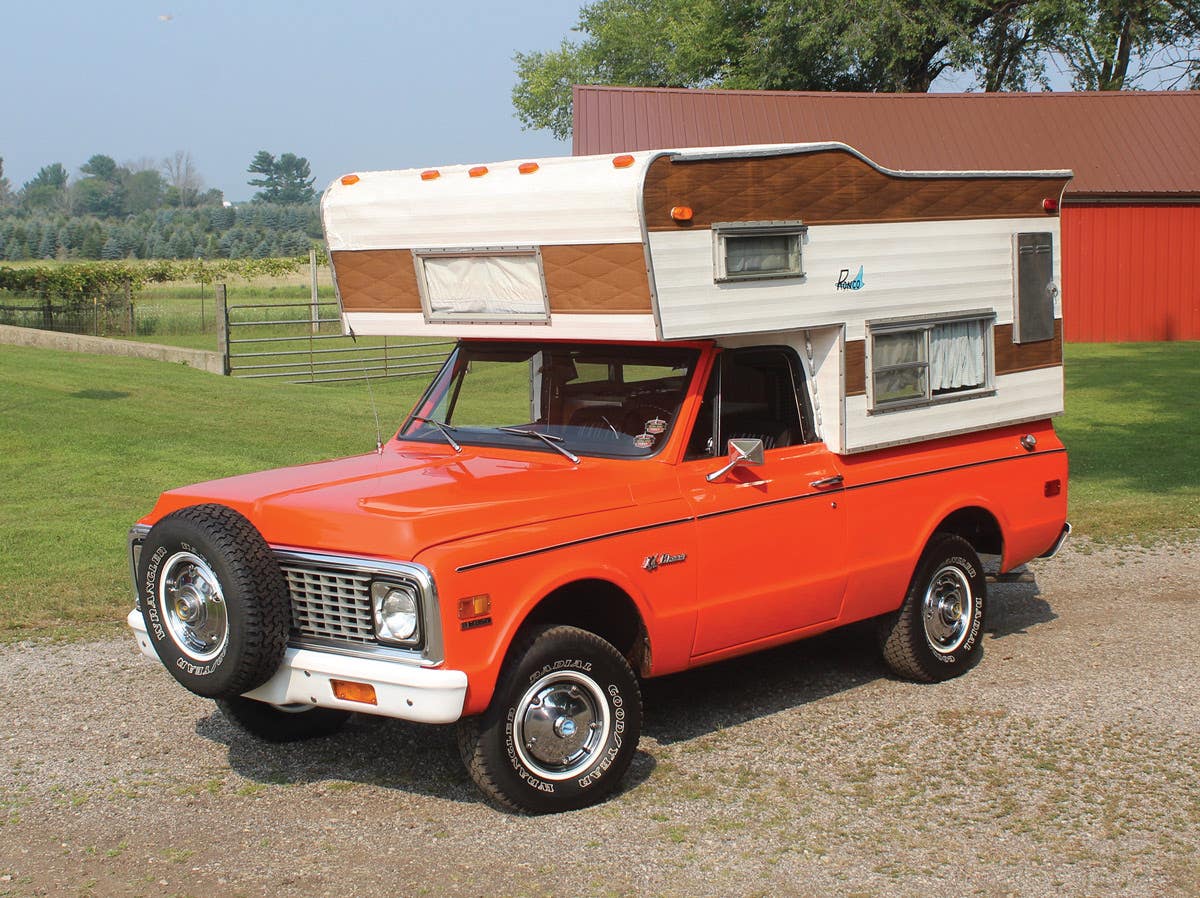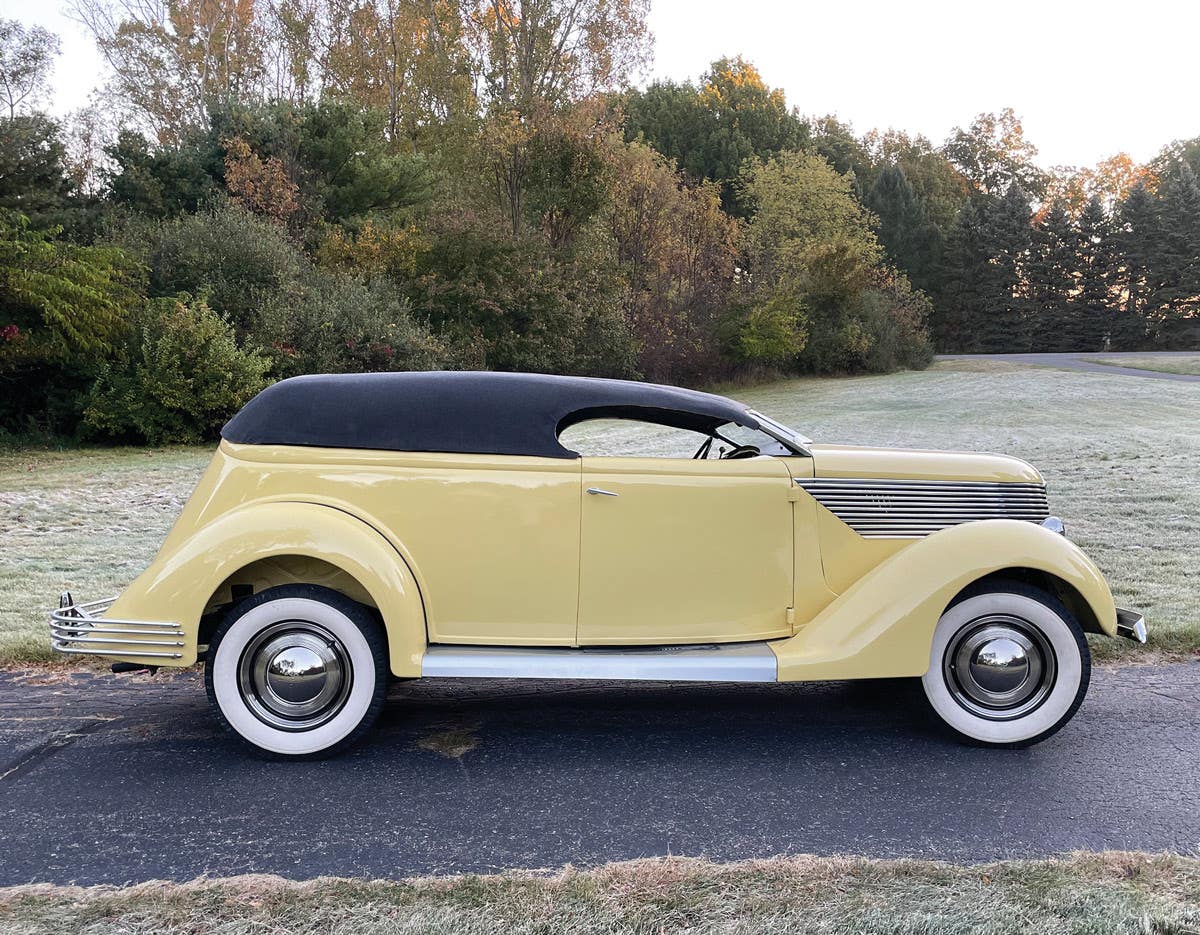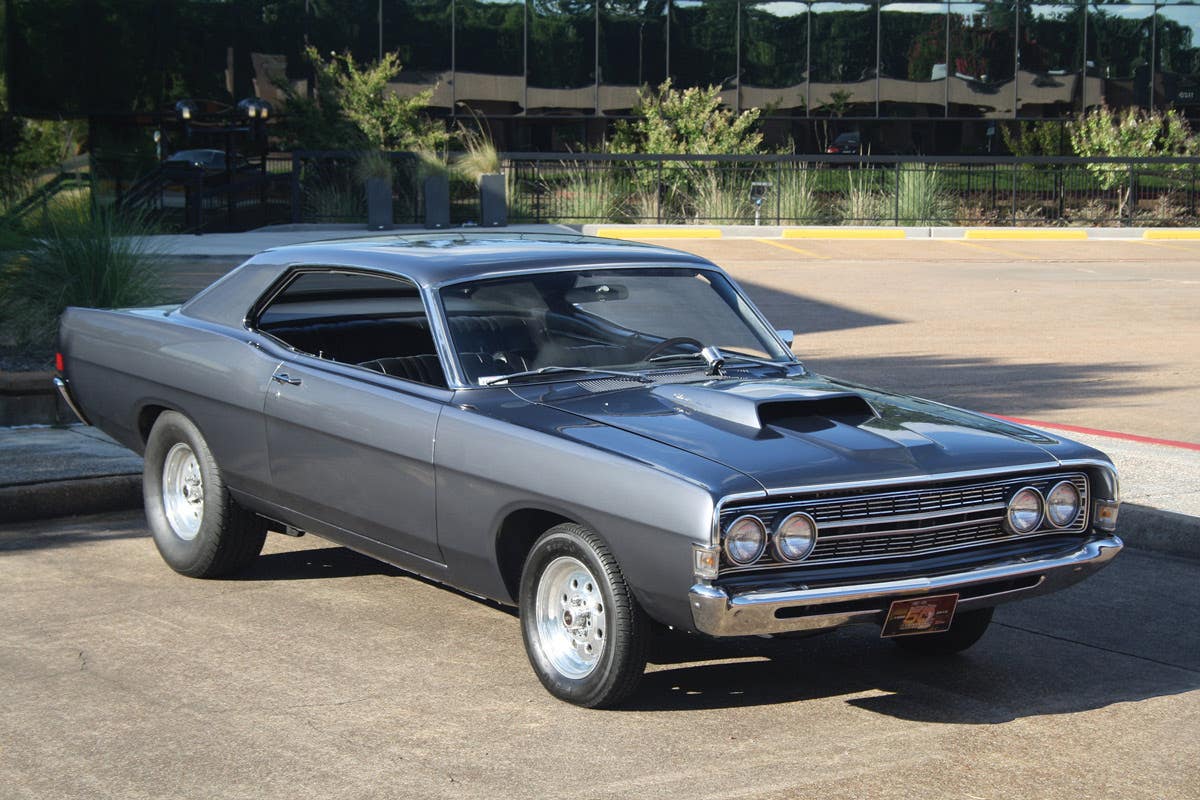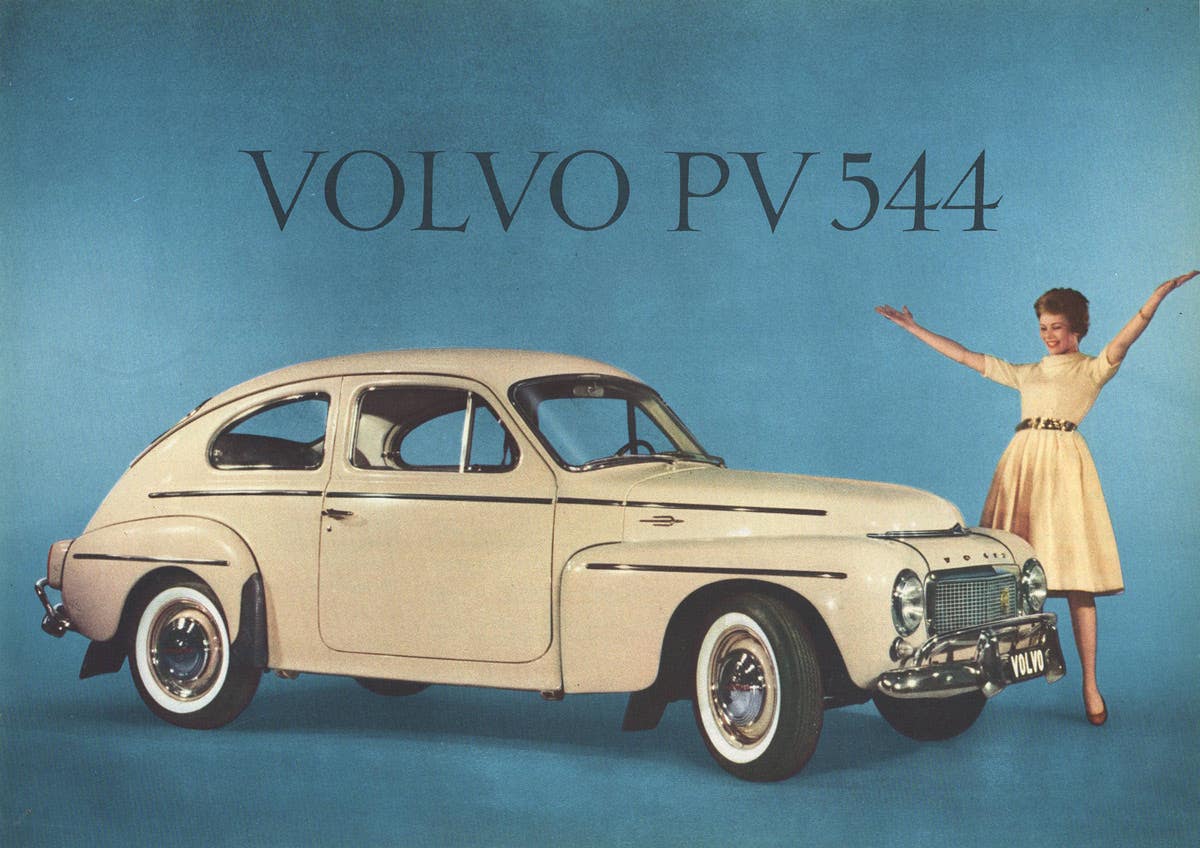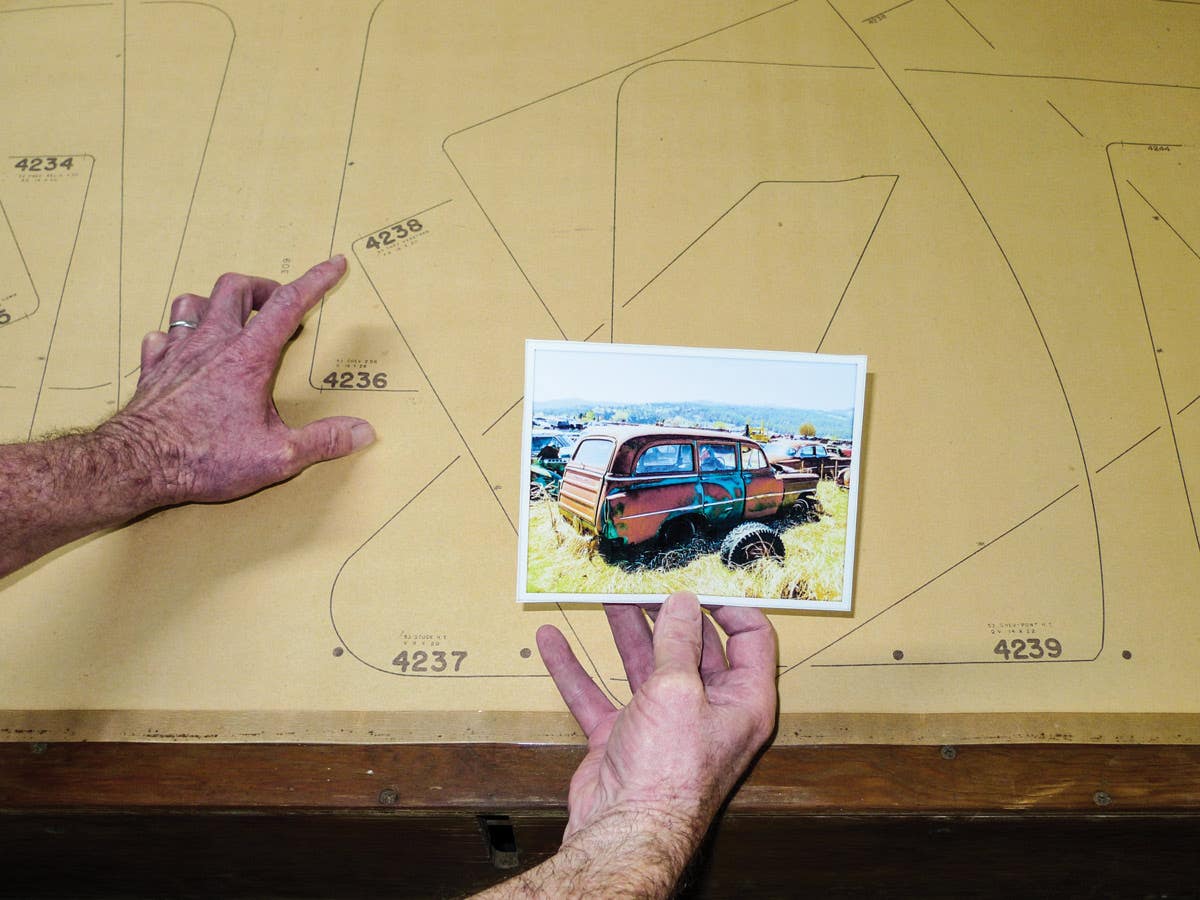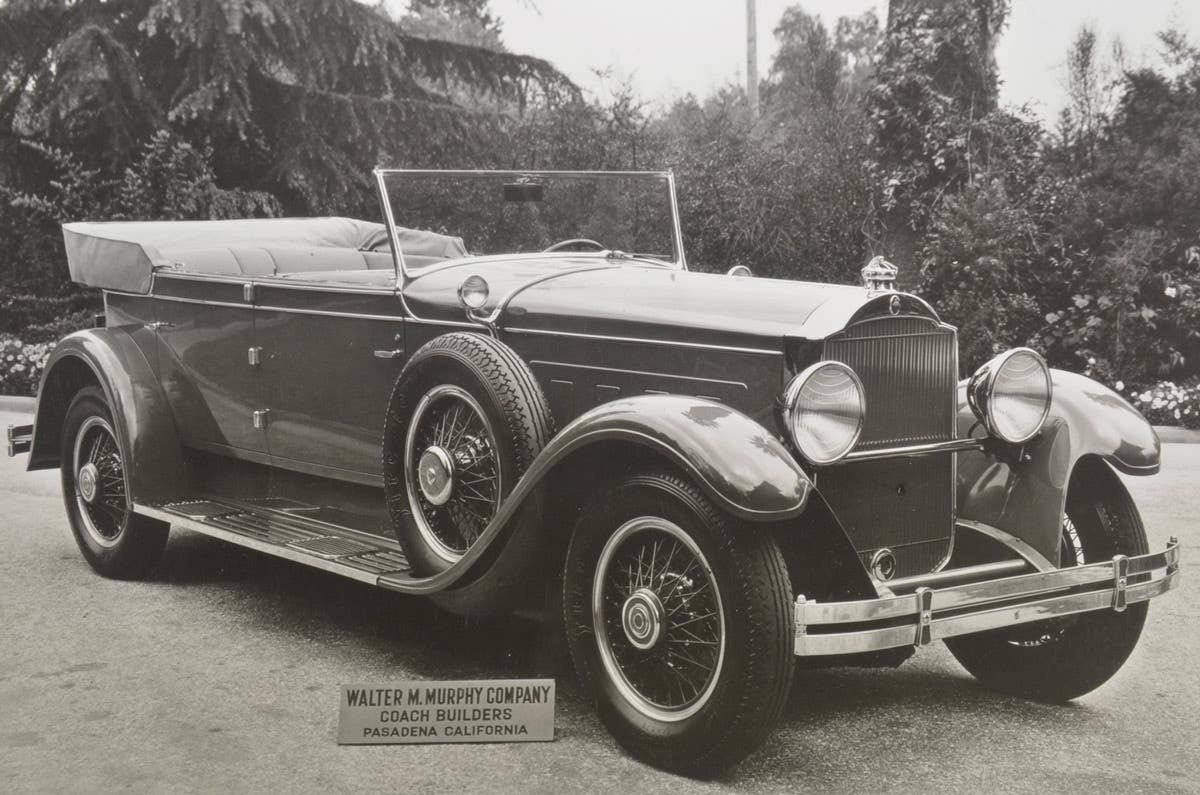Q&A with Kit Foster: May 30, 2013
Q. I recently bought an old car trunk at an estate auction. I really don’t know anything about trunks, but bought it because I thought it was neat. It has…
Q. I recently bought an old car trunk at an estate auction. I really don’t know anything about trunks, but bought it because I thought it was neat. It has a manufacturer label on the front, but I can’t make out who it is. Can you tell me? I need to know four things: 1. What does the manufacturer label say? 2. What kind of car was this trunk for and any idea how old it is? 3. What is the value of a trunk like this? 4. What’s the best way to sell it? Thanks very much for your help.
— Jim Keller, via e-mail
A. It looks like most of the hundreds of different car trunks made by various manufacturers over the years. As best I can read the label in your photo, it is a “Porto” trunk, made by the Plimpton Mfg. Co. of Walpole, Mass., outside Boston. It is probably from the 1920s and can be used on any car whose trunk rack it will fit. I’m unsure of its value. If you don’t do flea markets, the best way to sell it could be a classified ad in Old Cars Weekly.
-------------------------------------------------------------
Q. Regarding the question by Bob Farrell on Mustang quarter panel trim (Apr. 18), 1965 and 1966 Mustangs had an option of a contrasting pin stripe starting on the front fenders, running across the doors, around the side coves, and returning. If this option was selected, the side chrome was deleted. That would explain the lack of holes for the ornament. My father owned a Ford dealership in the ’60s and early ’70s, and we ordered many with the striping and without the ornament.
— John Logsdon, Cave Creek, Ariz.
A. Yes, that’s what I remember, too. Chuck Dickinson, of Portland, Ore., concurs. Another reader, who didn’t give a name, worked in two Ford dealerships in the mid-1960s. He notes that because of these options, all replacement quarter panels were supplied without holes. If the accents were to be installed during a repair, the holes were drilled at that time.
-------------------------------------------------------------
Q. The heater panel photo submitted by reader David Czarnecki (Q&A Apr. 25) is from a full-size 1965 Buick LeSabre, Wildcat or Electra 225. From the photo, it’s hard to tell if it’s from an AC or non-AC car. The labels on the upper right hand “mode” switch would tell you. This style was only used in ’65 as these Buicks have a one-year-only dash design. I have one in the garage.
— Chuck Dickinson, Portland, Ore.
A. Thank you. It didn’t show up well in the photo, but David’s panel is indeed from an air-conditioned car. The mode switch has both “REC” and “NORM” positions for AC, as well as “VENT” and “HTR.” Thanks for the identity check.
-------------------------------------------------------------
Q. Further to Paul Pakan’s query about an aerosol foam, I was a mechanic at a Chevy dealership in the 1970s. The slightly silvery-colored white foam was “heat riser valve lubricant” supplied by GM. It was used on carburetor choke flap shafts, throttle shafts and secondary throttle shafts on sticking Quadajet carburetors.
— Doug Avery, Wilmington, N.C.
A. Thanks for your experience, which was contemporary with Mr. Pakan’s memories. Searching online for that name I found a reference to a current part number 88862627, which is called merely “lubricant,” further described as “Rust Penetrating Inhibitor 12 oz Aerosol.” Whether this product will clean carbon from your engine I’m not sure. Dan Espen remembers using an Atlas brand foaming cleaner in the 1970s.
-------------------------------------------------------------
Q. Regarding Ed Thompson’s question about AM/FM radios, tape players and cassettes (Mar. 28), in addition to the cars you listed Greg Donahue’s “Production Figures and Options for 1963 Fords” lists the 1963 Galaxie as a car that came with a dealer-installed transistorized AM/FM pushbutton radio. In 1966, my dad bought a new Ford Galaxie 500. It came with an AM radio and Stereo Sonic eight-track tape deck. It was mounted separately on the transmission hump, to the bottom of the dash, and came with four speakers. The unit was made by Morotola, not Philco-Ford. 1967 saw the radio tape player in the dashboard as one unit. In 1979 I bought a new Corvette. The options that year were an eight-track or a cassette player. The glove box was designed to hold the tapes for eight-track optioned cars.
— Ron Hunt, Richmond, Ohio.
A. Thanks. I also received a phone call from Phil Guilhem of Alva, Okla. He says that while not an AM/FM unit, per se, in 1958 Lincoln offered an FM converter for the AM radio, which mounted to the transmission tunnel. I see indications that this could be ordered on other Ford products as well.
To submit questions to this column: E-mail angelo.vanbogart@fwmedia.com or mail to: Q&A, c/o Angelo Van Bogart, 700 E. State St., Iola, WI 54990-0001.
Got Old Cars?
If you don't subscribe to Old Cars Weekly magazine, you're missing out on the only weekly magazine in the car hobby. And we'll deliver 50 issues a year right to your mailbox every week for less than the price of a oil change! Click here to see what you're missing with Old Cars Weekly!
More Resources for Car Collectors:
- Classic car price guides, research, books, back issues of Old Cars Weekly & more
- Get expert restoration advice for your classic car
- Get car pricing, data and history all in one place
- Sign up for Old Cars Weekly's FREE email newsletter
- Need to buy or sell your classic car? Looking for parts or memorabilia? Search our huge online classified marketplace



